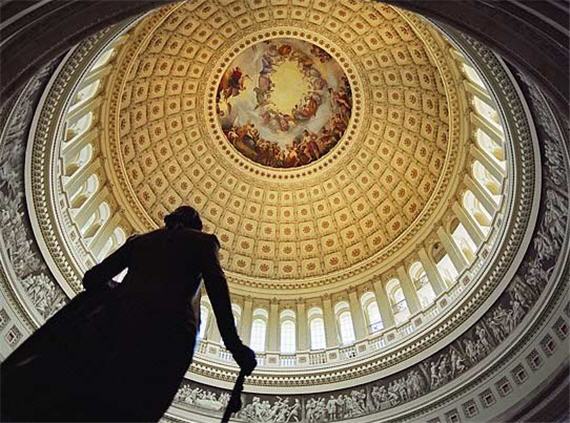More On The History Of The Debt Ceiling
Sarah Binder makes some interesting observations about the debate in Congress when the debt ceiling first became part of the U.S. Code in 1917:
The most commonly cited treatment of why we have a debt limit is a Congressional Research Service report that identifies 1917 and 1939 as critical turning points in how Congress authorized debt management by the Treasury Department. Before 1917, Congress authorized loans for specific purposes; with enactment of the Second Liberty Bond Act* in 1917, Congress moved to authorize separate limits for different types of securities (as explored in this 1950s treatment of the transition). In 1939, Congress again altered how it delegated authority to Treasury, creating the first ceiling on most types of borrowing instruments.
Judging from the NY Times coverage of the 1917 episode, legislators paid little attention to the implications of mandating a ceiling. They focused instead on Treasury Secretary McAdoo’s request for a higher borrowing limit so as to fund an expensive war effort. The ceiling was created to empower, not rein in, Treasury (prompting a failed effort to create a congressional committee to oversee Treasury’s actions). Similarly, the creation of the aggregate ceiling in 1939 reflected congressional deference to Treasury, granting the department flexibility in refinancing short term notes with longer term bonds. As the Senate floor debate makes clear, senators viewed the move as removing a partition in the law that hampered Treasury’s ability to manage the debt.
The law was meant, then to expand Treasury Department discretion in incurring debt and, in its 1917 version, to eliminate the necessity for Congress to separately authorize new loans.





Next observation. Reports from the Constitutional Convention reveal that the new Constitution was intended to expand federal powers over commerce. This focus on limitations over those powers misses the point.
Well, I guess that answers my question about the constitutionality of Congress delegating the authority to raise the debt limit to the president.
Kind of silly. Whatever they intended they wrote something very specific. If the intent was other than a limit on Treasury, then they should have just delegated complete authority.
But, wait, that would have been unconstitutional. Who would’ve thought it?